Why are people talking about Russia and Ukraine?
- Published
- comments
Here's Ricky with everything you need to know about what's happening in the two countries.
You may have been hearing lots of talk at the moment about two countries, Ukraine and Russia.
Some people are worried that Russia - one of the most powerful countries in the world - wants to send soldiers into its neighbouring country Ukraine, with fears that this could lead to a war.
However, Russia has denied that it is planning on doing this.
Ukraine and Russia have a long and complex history. Read our guide to find out more about what's going on at the moment and why it's so important.
Why are people worried?
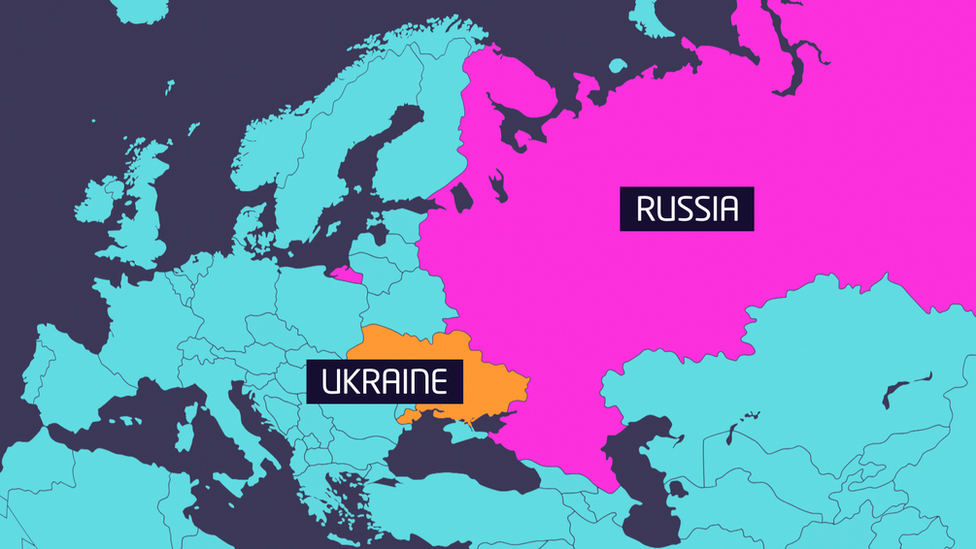
A map of Europe showing Ukraine and Russia
World leaders are concerned because Russia has sent around 100,000 soldiers to its border with Ukraine.
Some think this is a sign that Russia plans to invade the country - an invasion is when one country sends its army into another country or area without permission.
In the past, Russian forces have crossed into Ukraine - in 2014 Russia controversially took back control of an area of Ukraine called Crimea.
So far, Russia has said it isn't planning any invasion of Ukraine.
Russia says it's concerned about its own security and, amongst other things, is worried about the possibility of Ukraine joining a group of countries called Nato.
Nato stands for the North Atlantic Treaty Organisation.
Nato is an international organisation which brings together the armies of various countries, including Britain and the United States.
It was formed in 1949, after the end of the Second World War.
Russia wants a promise that Ukraine will not join Nato.
Historically, Russia and countries that are a part of Nato (such as the UK and the US) have not always got on.
Russia thinks that if Ukraine joins Nato, the US and its allies will have too much power in an area next to their borders.
But many of Ukraine's western allies refuse to agree with Russia's demands.
The US also says that Russia has offered no explanation as to why they have sent soldiers so close to Ukraine.
What have world leaders said?
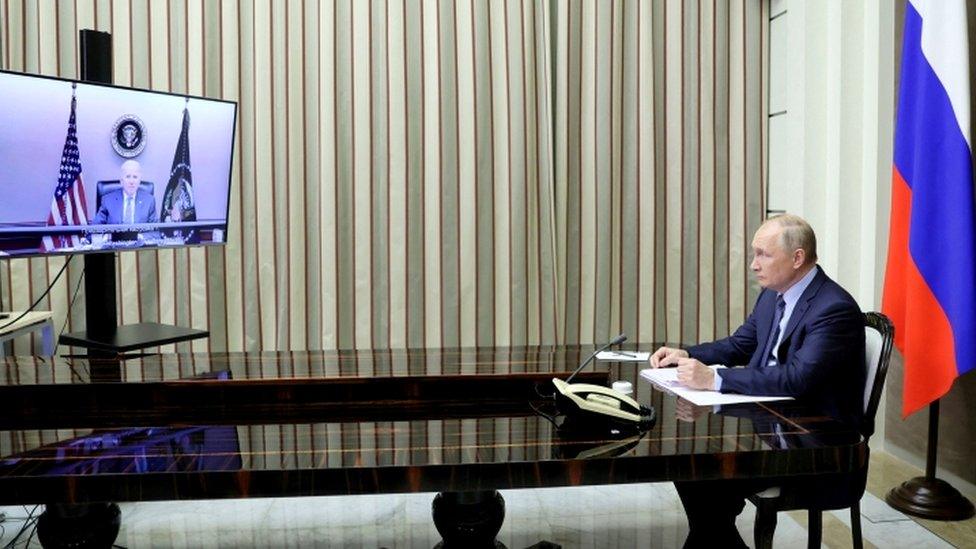
The US President Joe Biden (on the left) and Russian President Vladimir Putin (on the right) have spoken via video link and over the phone
Russian President Vladimir Putin has spoken several times to US President Joe Biden and high-level talks between the two countries continue.
President Biden has warned that an invasion of Ukraine would result in trouble for Russia.
On 20 January, European Union leaders urged Russia to stop sending soldiers to the Ukrainian border and return to separate talks which are being led by France and Germany.
Britain announced it was sending a small team of British troops to Ukraine to provide training and weapons.
Russia has accused the West of being aggressive towards it and President Putin says that the US broke agreements not to make Nato bigger.
What's the latest?
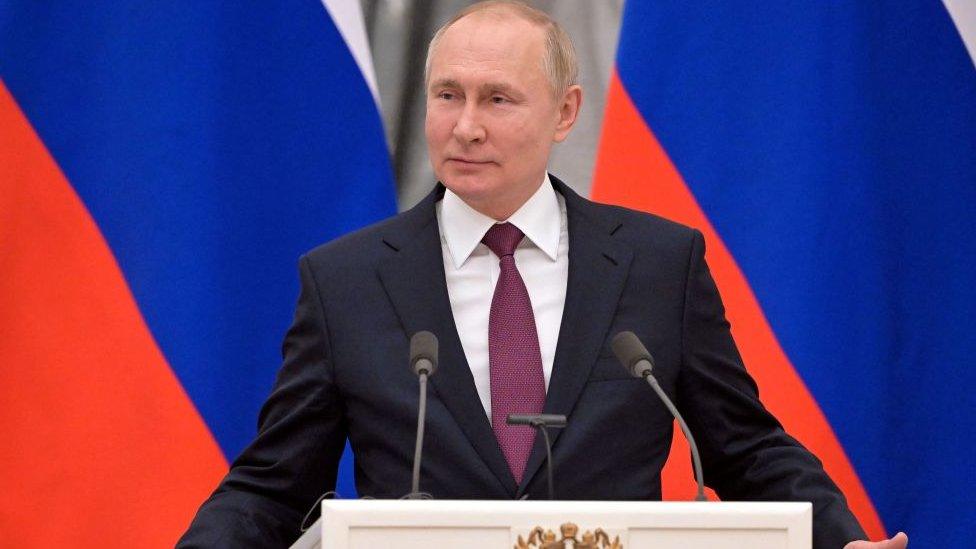
President Vladimir Putin has told a news conference on 15 February that Russia does not want war in Europe.
Russia said it is pulling back some of its troops from near Ukraine after a build-up on the border raised fears of an invasion.
More than 100,000 Russian troops are currently assembled at Ukraine's border. Russia has always denied it is planning an attack.
There has been no independent confirmation of the withdrawal with countries like the UK and US reacting cautiously to the announcement.
Nato, international organisation which brings together the armies of various countries including Britain and the US, said the Russian announcement was a cause for "cautious optimism" but that they had not seen evidence of de-escalation on the ground.
In recent days the US had warned an invasion could be imminent, and moved its embassy out of the capital Kyiv and Prime Minister Boris Johnson told the BBC he thinks Russia could be planning "the biggest war in Europe since 1945".
The prime minister was speaking from Munich, where world leaders are meeting for an annual security conference.
On 13 February British citizens in Ukraine were told to leave Ukraine by the UK's Foreign Office.
It came after the United States instructed its citizens to leave over fears that Russia was set to invade Ukraine "any day now".
Speaking in Moscow on Tuesday 15 February Russian President Vladimir Putin told a news conference that Russia does not want war in Europe.
He said: "Do we want this or not? Of course, not. That is exactly why we put forward proposals for a process of negotiations."
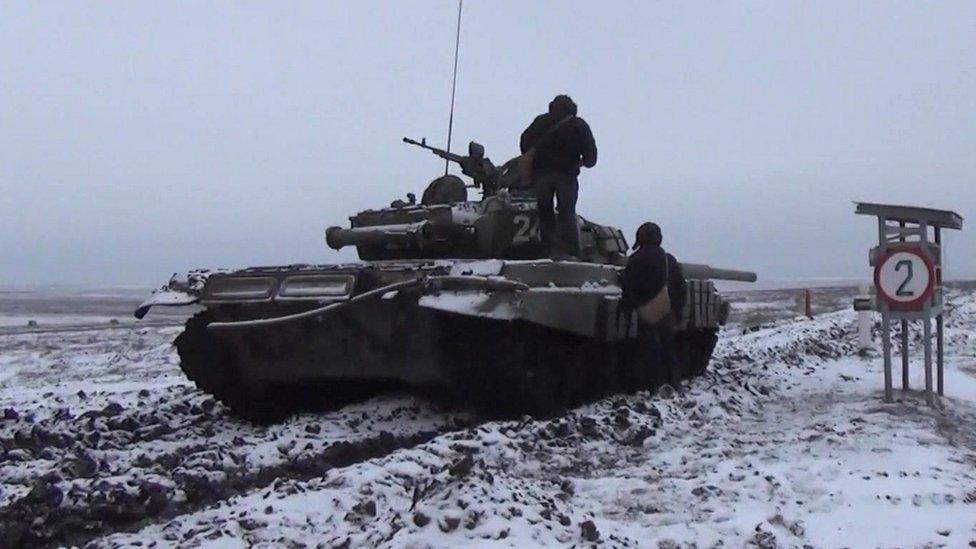
Russian TV has shown pictures of tank exercises close to the border with Ukraine
It comes after top US and Russian politicians and diplomats met in Geneva in Switzerland last week for talks, which are hoped to help ease the situation.
Mr Blinken said that those talks were a "critical moment".
Mr Blinken also warned that there would be a "united, swift and severe" response if Russian soldiers did enter Ukraine.
Russian Foreign Minister Sergei Lavrov accused Nato of working against Russia and said that Russia has no plans to attack Ukraine.
Speaking after the meeting, Mr Lavrov said that the talks had been open and useful.
What's the history between Russia, Ukraine and the West?
Russia, Ukraine and western countries have a long and complex history.
Read on to find out more about the some of their most significant recent events.
1922 - 1991: USSR
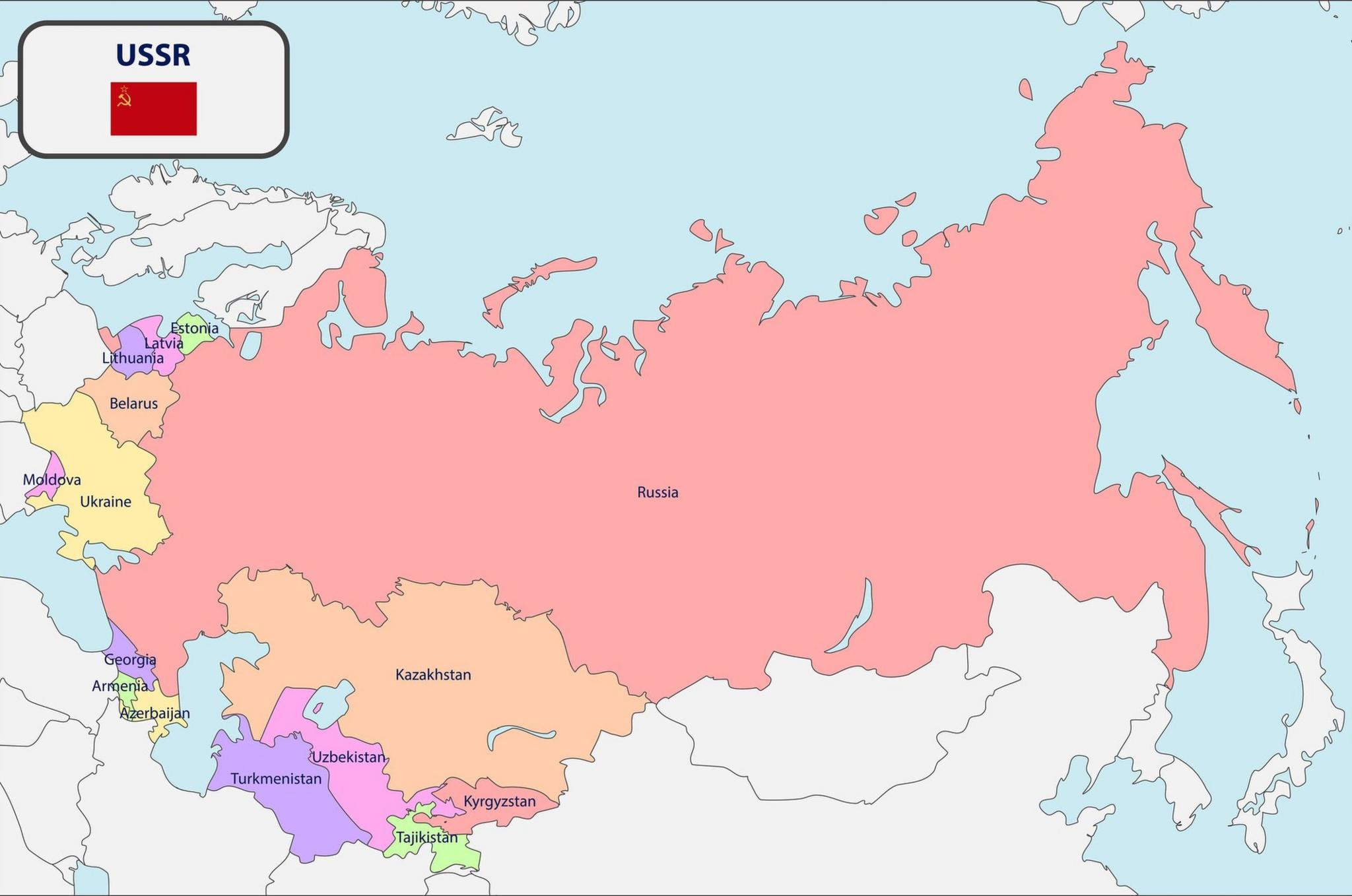
This map shows the 15 countries that together made up the USSR, also known as the Soviet Union
Russia and Ukraine both used to be part of a very big country called the Soviet Union, and before that the Russian Empire.
In 1922, the Union of Soviet Socialist Republics (the USSR) - better known as the Soviet Union, was formed.
Armenia, Azerbaijan, Belarus, Estonia, Georgia, Kazakhstan, Kyrgyzstan, Latvia, Lithuania, Moldova, Russia, Tajikistan, Turkmenistan, Ukraine, Uzbekistan
The USSR was a communist country, with its headquarters in Russia's capital Moscow, and it did not agree with western, capitalist countries (like the UK and the US) and their way of doing things.
The USSR existed until 1991, when it was broken up into 15 smaller countries.
1940s - 1991: Cold War

The arrival of these two leaders - US President Ronald Reagan in 1980 and USSR premier Mikhail Gorbachev in 1985 - changed the course of the Cold War
There have also historically been tensions between the West and Russia.
The Cold War was a 40-year division between the Soviet Union and western countries (the US and its allies, like Britain), which started in the 1940s and lasted until 1991.
It was a war between two ideas and ways of ruling - communism in the East and capitalism in the West.
Even though the Cold War came to an end over thirty years ago, Russia and the West still don't always agree with each other.
2014: Crimea
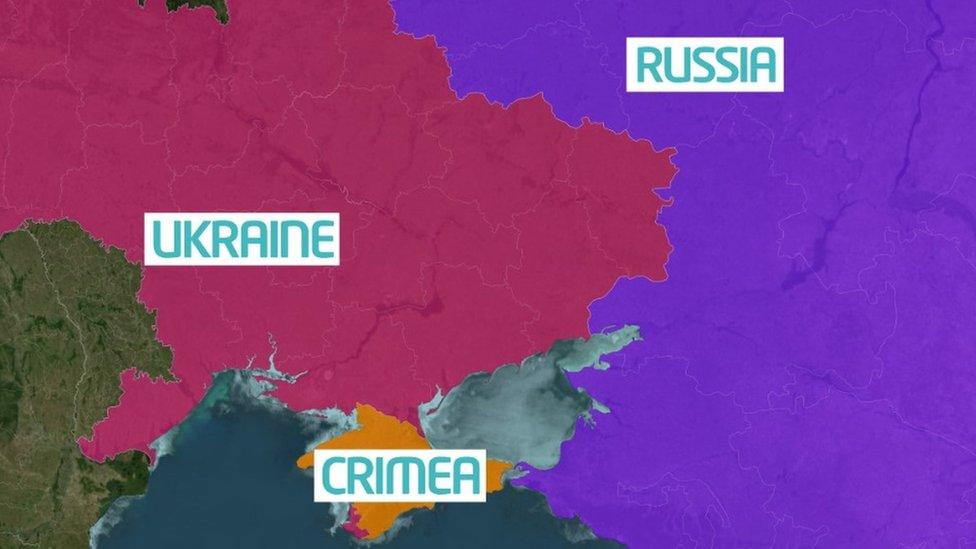
Ukraine shares borders with both European Union countries and Russia - but as an old member of the Soviet Union, it has deep ties with Russia, with many Russians living in the country and Russian being widely spoken there.
Some Ukrainians want the country to have closer ties to the European Union, but others want it to have closer ties to Russia.
The EU is a partnership between 27 European countries whose governments work together on issues such as trade, politics and security.
In 2014, Russia took back control of an area of Ukraine called Crimea in southern Ukraine.
Ever since then, Ukraine's army has been locked in a war with Russian-backed rebels in eastern areas of Ukraine near the border with Russia.
The conflict has caused at least two million people to flee their homes and 14,000 people have lost their lives.
